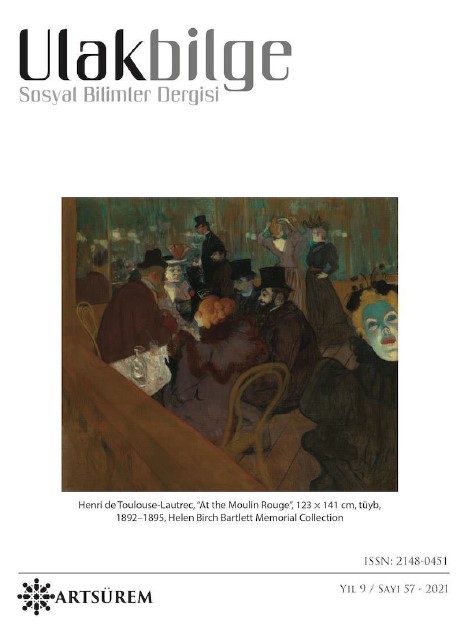YOKSUL SANATTA MALZEMENİN DEĞİŞEN ANLAMLARI VE CANLI HAYVAN KULLANIMI
THE CHANGING MEANINGS OF THE MATERIAL IN POOR ART AND THE USE OF LIVE ANIMALS
Author(s): Ayşegül TürkSubject(s): Cultural history, Visual Arts, Post-War period (1950 - 1989), History of Art
Published by: Sanat ve Dil Araştırmaları Enstitüsü
Keywords: Poor Art; Living Animal; Artwork; Temporality-permanence problem;
Summary/Abstract: The Arte Povera movement emerged as a reaction to the mainstreams in Europe in the second half of the 1960s. Poor art has created a new sense of time by focusing on what is here and now in the trilogy of past, present, future. In this perception there are roots of destructiveness. The main issue of poor art, which places the concept of time at the center, is the problem of temporality and permanence. It takes place within itself. The transformation of the artwork in the process has shaken the permanence of the work; therefore, the uniqueness of the work and the test of writing accordingly began to be questioned again. This research is focused on the ongoing arrangements of the leading representatives of Poor art, Jannis Kounellis and Pier Paolo Calzolari, who used an alive dog or horse as an art object. In this context, the state of the art work will be revealed through the changing print, temporality and permanence of the work. Semantic analysis of the works of these artists will be made through the context of human, animal and art.
Journal: Ulakbilge Sosyal Bilimler Dergisi
- Issue Year: 9/2021
- Issue No: 57
- Page Range: 313-321
- Page Count: 9
- Language: Turkish

